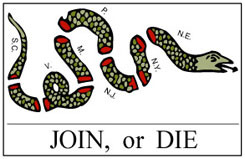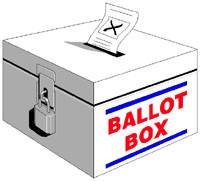
The foundation of our American Government, its purpose and form and structure are found in the Constitution of the United States. The Constitution, written in 1787, is the "supreme law of the land" because no law may be passed that contradicts its principles. No person or government is exempt from following it.
The Constitution establishes a federal democratic republic form of government. That is, we have an indivisible union of 50 sovereign States. It is a democracy because people govern themselves. It is representative because people choose elected officials by free and secret ballot. It is a republic because the Government derives its power from the people.
The purpose of our Federal Government, as found in the Preamble of the Constitution, is to "establish Justice, insure domestic Tranquility, provide for the common defense, promote the general Welfare, and secure the Blessings of Liberty to ourselves and our posterity." In order to achieve this purpose the Founding Fathers established three main principles on which our Government is based:
- Inherent rights: Rights that anyone living in America has;
- Self Government: Government by the people; and
- Separation of Powers: Branches of government with different powers.
The Writing of the Constitution
The Declaration of Independence established an underlying foundation later realized through the Constitution of the United States of America. After the American Revolution, each of the original 13 states operated under its own distinct rules of government. Plans for colonial union were proposed from time to time, one of which was the Albany Plan of 1754. Benjamin Franklin was the author of this plan. During this time period, most states opposed any form of centralized rule by government, fearing the type of control exercised when England ruled the states as colonies. So as a compromise, they framed the Articles of Confederation, which were ratified in 1781. This "league of friendship" did not provide for any type of real effective power in a central government. This led to many problems, and left the central government unable to regulate commerce between states, settle disputes, or deal with foreign governments. The country was weak and on the verge of economic disaster. One of the most critical events during this time was an open revolt, known as Shays� Rebellion in Massachusetts (1786-87). The central government was unable to provide much assistance to the state, lacking a central army.

A special convention was called, which came to be known as the Constitutional Convention of 1787. Delegates from all of the states except Rhode Island convened in Philadelphia, PA, to create a plan for a more centralized type of government and to revise the Articles of Confederation. Two plans were presented for government�the Virginia Plan and the New Jersey Plan. The Virginia Plan called for a powerful central government, comprised of the executive, legislative, and judicial branches. Smaller states were concerned that this plan would not be truly representative of their needs and interests. The alternative plan, the New Jersey Plan, would revise and amend the Articles of Confederation to allow Congress to control trade and taxes, but still provide states with much control and autonomy at the local level.
The delegates to the convention finally reached a compromise, combining ideas from both plans. A bicameral lawmaking branch was created. While states were to have equal representation in the Senate regardless of state size, the House of Representatives membership was to be based on state population. In addition to this legislative branch, an executive and judicial branch were formed, and it was agreed that no branch would have more power than the other, through a system of checks and balances. This new plan was known as the Great Compromise. As a result of this work, the Constitution was drafted and presented to the American public on September 17, 1787.
 Print
Print Email
Email







